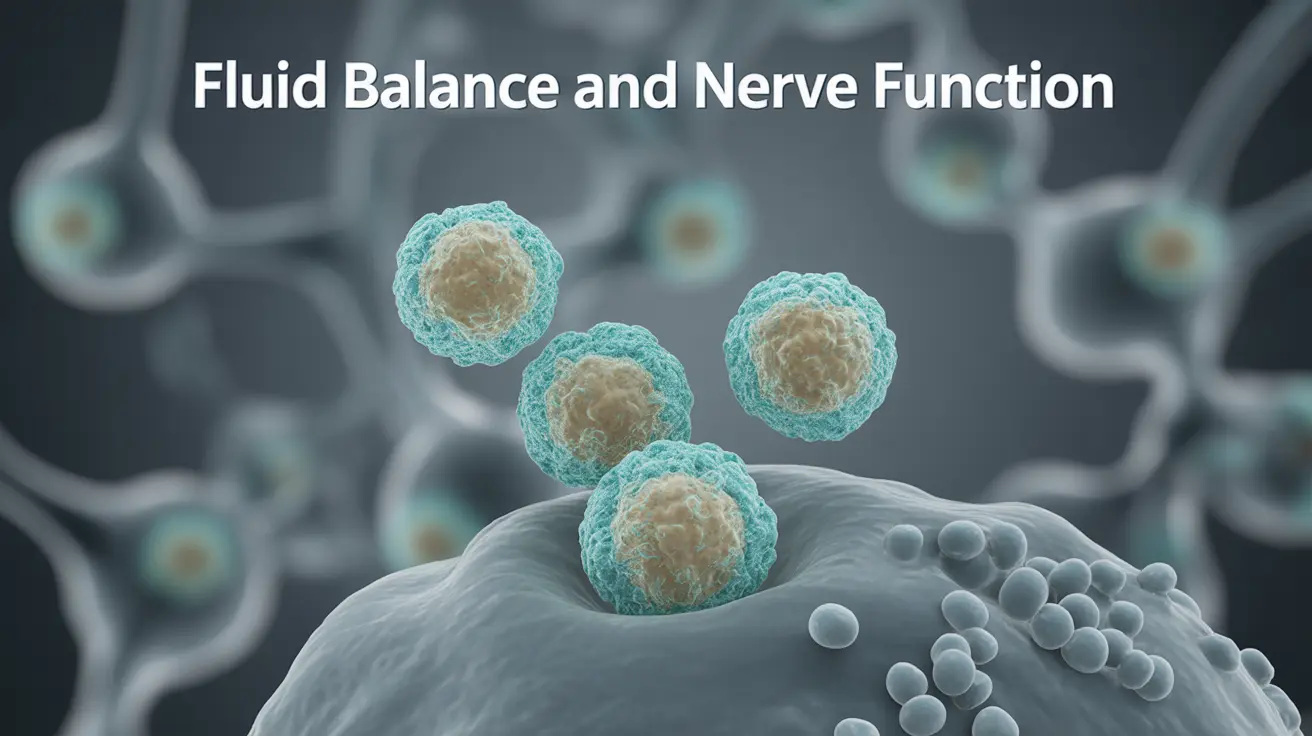Low chloride levels, also known as hypochloremia, occur when the concentration of chloride in your blood falls below normal ranges. This important electrolyte plays a crucial role in maintaining proper fluid balance, blood pressure, and acid-base levels in your body. Understanding the causes, symptoms, and treatment options for low chloride levels is essential for maintaining optimal health.
When chloride levels drop, it can affect multiple body systems and lead to various health complications. This comprehensive guide will explore everything you need to know about managing and preventing low chloride levels.
Understanding Chloride's Role in Your Body
Chloride is an essential electrolyte that works alongside other minerals like sodium and potassium to help regulate:
- Fluid balance in and outside of cells
- Blood pressure
- Acid-base balance
- Proper nerve and muscle function
- Digestion through the production of stomach acid
Common Causes of Low Chloride Levels
Several factors can contribute to low chloride levels in the blood:
Medical Conditions
- Severe vomiting or diarrhea
- Addison's disease
- Congestive heart failure
- Kidney disease
- Burns affecting large areas of the body
Medications
- Diuretics (water pills)
- Certain blood pressure medications
- Some antibiotics
Other Factors
- Excessive sweating
- Chronic respiratory conditions
- Metabolic alkalosis
- Prolonged fluid loss without proper replacement
Recognizing the Symptoms
The symptoms of low chloride levels can vary in severity and may include:
- Weakness and fatigue
- Difficulty breathing
- Dehydration
- Confusion or mental changes
- Muscle weakness or spasms
- Irregular heartbeat
- Loss of appetite
- Lethargy
Diagnosis and Testing
Healthcare providers typically diagnose low chloride levels through:
- Basic metabolic panel (BMP)
- Comprehensive metabolic panel (CMP)
- Electrolyte panel
- Urinalysis
- Additional tests to determine underlying causes
Treatment Approaches
Treatment for low chloride levels focuses on both addressing the underlying cause and restoring proper electrolyte balance. Common treatment methods include:
Immediate Interventions
- Intravenous (IV) fluids containing chloride
- Oral electrolyte solutions
- Salt tablet supplementation when appropriate
Long-term Management
- Treating underlying medical conditions
- Adjusting medications that may be causing the imbalance
- Dietary modifications
- Regular monitoring of electrolyte levels
Prevention Strategies
To help prevent low chloride levels, consider these important steps:
- Maintain proper hydration
- Consume a balanced diet rich in chloride-containing foods
- Monitor medications that affect electrolyte levels
- Regular check-ups if you have risk factors
- Prompt treatment of conditions that cause fluid loss
Frequently Asked Questions
What are the common causes of low chloride levels (hypochloremia) in the blood?
Common causes include severe vomiting or diarrhea, certain medications (especially diuretics), kidney disease, congestive heart failure, and excessive sweating. Medical conditions affecting fluid balance and some hormonal disorders can also lead to low chloride levels.
What symptoms should make me suspect I have low chloride levels?
Key symptoms include weakness, fatigue, difficulty breathing, confusion, muscle weakness or spasms, irregular heartbeat, and dehydration. If you experience these symptoms, especially in combination, seek medical evaluation.
How is hypochloremia diagnosed and what tests are involved?
Diagnosis typically involves blood tests such as a basic metabolic panel (BMP) or comprehensive metabolic panel (CMP). These tests measure chloride levels along with other important electrolytes. Additional testing may be needed to identify underlying causes.
What treatments are available to correct low chloride levels and restore electrolyte balance?
Treatment options include IV fluids containing chloride, oral electrolyte solutions, and addressing underlying causes. The specific treatment approach depends on the severity and cause of the condition.
How can I prevent low chloride levels, especially if I take medications like diuretics?
Prevention strategies include maintaining proper hydration, eating a balanced diet rich in chloride-containing foods, regular monitoring if you're on diuretics, and promptly addressing conditions that cause fluid loss. Regular check-ups with your healthcare provider are also important.




